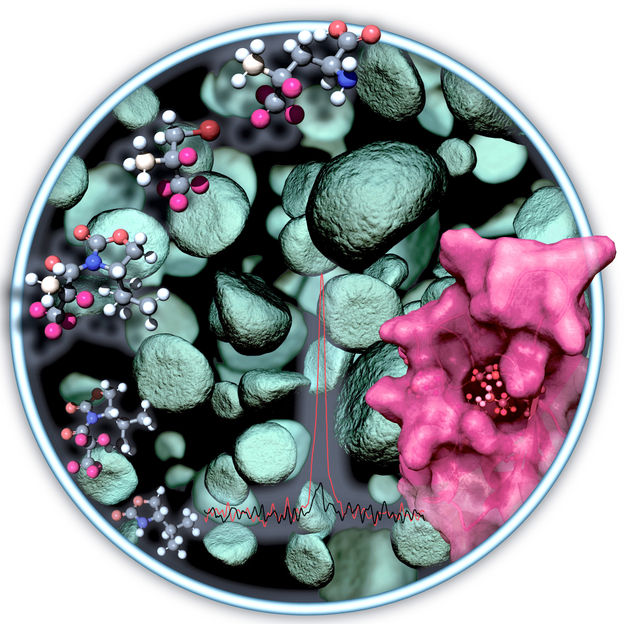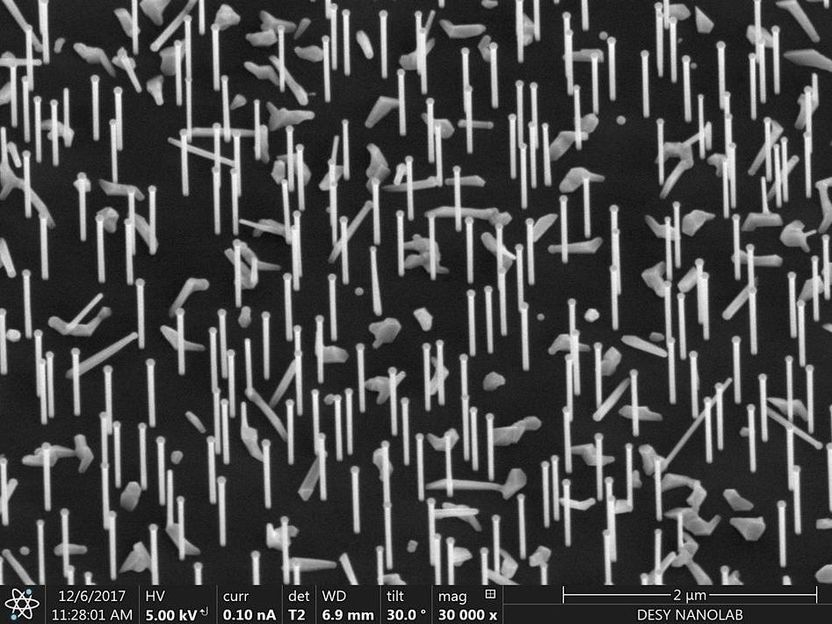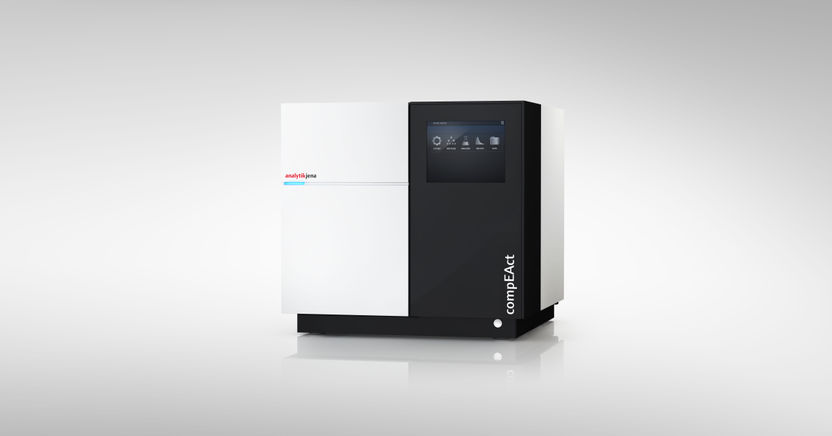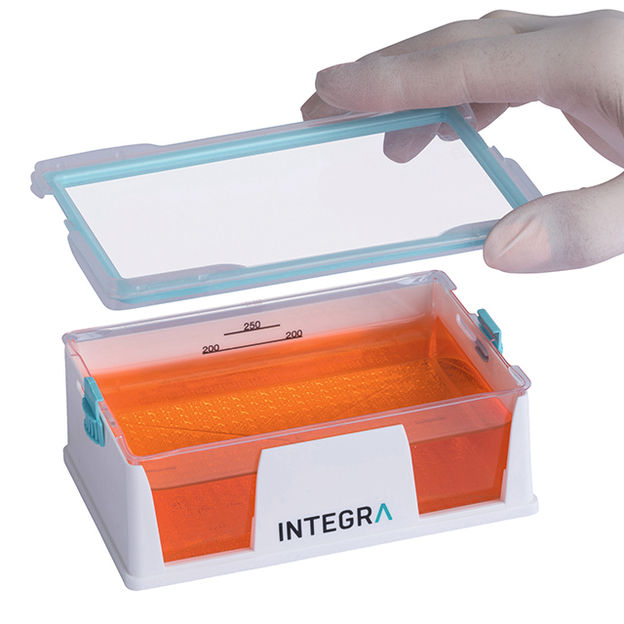International Research Team Develops Method to Characterize Nanomaterials
Researchers from Paderborn University, the Istituto Nazionale di Ricerca Metrologica (INRiM),Italy’s national metrology institute, the Politecnico di Torino, Italy, and the Physikalisch-Technische Bundesanstalt (PTB), National Metrology Institute of Germany, have studied sequential infiltration synthesis in nanostructured polymers. They hope to improve the possibilities for characterizing material properties at the smallest length scale. Materials with structures in the range of just a few nanometers will be essential, for instance, in future computer chips, energy conversion and energy storage processes, and molecular sieves. The researchers have now published their findings as a cover article in “ACS Applied Polymer Materials.”

Symbolic image
Computer-generated image
At Paderborn, the team led by physicist Prof. Jörg Lindner works with nanostructured block copolymers, interlinked polymer chains that “self-organize” into regular patterns, allowing for a wide range of applications. “Our ability to control the self-organization of block copolymers has made rapid progress in recent years,” says Lindner. In order to continue this development, though, nondestructive methods for characterizing material properties must be expanded, as the goal of a larger endeavour involving the co-authors of partner institutions, INRiM, Politecnico di Torino and PTB.
Block copolymers allow extremely small structures to be created on semiconductor surfaces, which facilitates future-oriented processes for further miniaturizing next-generation microelectronic components. “The structure sizes that can be achieved here are limited only by the length of the polymer chains, so they can be even smaller than the structures that are laboriously produced through conventional techniques. The advances in miniaturization also create a need for new measurement methods and size standards so that smaller structures can be analyzed. Block copolymers can help here, too – but only after the chemical differences between the involved polymer types are increased by selectively modifying one of the polymers. Selectively integrating aluminum oxide using sequential infiltration synthesis makes it possible to create nanostructures that can be used to test these new measurement processes,” explains Lindner.
Original publication
Most read news
Original publication
Eleonora Cara et al.; Developing Quantitative Nondestructive Characterization of Nanomaterials: A Case Study on Sequential Infiltration Synthesis of Block Copolymers; ACS Appl. Polym. Mater. 2023
Topics
Organizations
Other news from the department science

Get the analytics and lab tech industry in your inbox
By submitting this form you agree that LUMITOS AG will send you the newsletter(s) selected above by email. Your data will not be passed on to third parties. Your data will be stored and processed in accordance with our data protection regulations. LUMITOS may contact you by email for the purpose of advertising or market and opinion surveys. You can revoke your consent at any time without giving reasons to LUMITOS AG, Ernst-Augustin-Str. 2, 12489 Berlin, Germany or by e-mail at revoke@lumitos.com with effect for the future. In addition, each email contains a link to unsubscribe from the corresponding newsletter.
Most read news
More news from our other portals
Last viewed contents

Sharper than ever: Physicists make molecular vibrations more detectable - The new method will improve the understanding of interactions in molecular systems and to further develop simulation methods
'Invisible' protein structure explains the power of enzymes

Tiny sensors for major advances - Using NMR spectrometry to analyse important molecules that have not been accessible before now

Yumda now part of LUMITOS - Europe’s leading provider of B2B portals has expanded its portfolio to media outlets for the food and beverage industries
U.S. Department Of Defense selects Applied Biosystems for development of instrument system to identify infectious diseases

Scientists observe nanowires as they grow - X-ray experiments reveal exact details of self-catalysed growth for the first time

compEAct Serie | Elemental analyzers | Analytik Jena

New driver, target in advanced mucosal melanoma
Invitrogen and Applied Biosystems Complete Merger - Combined Company, Called Life Technologies Corporation, is a Global Leader in Biotechnology Reagents and Systems





















































